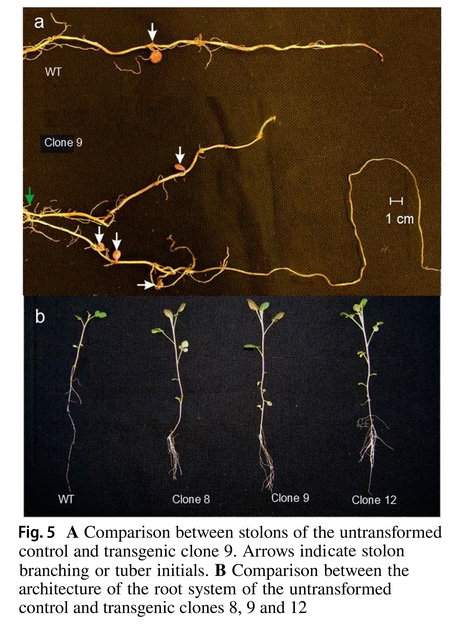
|
Scooped by Julio Retamales |
Authors: José A. Abelenda and Javier Barrero-Gil.
Journal of Experimental Botany (2023)
Abstract: "Despite its prominent role as a stress hormone and its related importance for agriculture, abscisic acid (ABA) molecular signaling is poorly characterized in crops such as potato (Solanum tuberosum). Potato is the world’s third most produced food crop and the most prominent non-cereal in terms of production and consumption (FAOSTAT, 2021). Its importance as a staple food is increasing worldwide. With the immediate need for stress-tolerant and more resilient plants due to changing climate patterns, research on ABA functions in potato will be essential to maintain productivity. Moreover, multiple developmental and physiological aspects of ABA unrelated to abiotic stresses are often overlooked and are difficult to study in plant models. Investigating putative ABA signaling players in potato plants, Liu et al. (2023) have deciphered the negative role of the phosphatase StHAB1 on ABA perception and potato drought stress responses. In addition, the authors provide conclusive evidence that ABA signaling is required for maintaining dormancy in aerial lateral buds. It has long been known that ABA stimulates tuber formation, but the molecular details of such mechanisms remain unknown. It was recently shown that the development of aerial lateral buds leads to a reduction in underground tuber production (Nicolas et al., 2022). Therefore, the ABA-mediated blockage of lateral bud outgrowth reported by Liu et al. (2023) may provide a molecular explanation of the effects of ABA on tuber formation. The transgenic potato lines created in this study offer excellent genetic tools for further study of these connections and have potential biotechnological implications. This work underscores the importance of translational research from models to crops and how it is key not to circumscribe observations to obvious outputs in functional analysis in non-model plants."
Julio Retamales's insight:
Extended commentary on the relevant article by Liu et al. ("StHAB1, a negative regulatory factor in abscisic acid signaling, plays crucial roles in potato drought tolerance and shoot branching"), which was already posted here and is to be found at:
- https://doi.org/10.1093/jxb/erad292
No comment yet.
Sign up to comment



 Your new post is loading...
Your new post is loading...








